#Reine Stewart
Explore tagged Tumblr posts
Text

Peter Tork and Reine Stewart with members of his post-Monkees band Release, 1970
20 notes
·
View notes
Text

Peter Tork and/or Release, 1969.
“After quitting [The Monkees], Tork tried to launch a new band called Peter Tork and Release. The fact that he’d been in the Monkees may have made it harder to gain respect, he said, but his fame also gave him advantages over other new bands. The pluses and debits of being an ex-Monkee balanced out, Tork thinks. Release failed, he says, because ‘I didn’t know how to stick to it. I ran out of money and told the band members, “I can’t support us as a crew any more, you’ll just have to find your own way.”’ In hindsight, Tork says, he should have asked the others to help support the band and hang with it after he could no longer afford to be its sugar daddy. But at the time, Tork says, he lacked the self-esteem to ask for other people’s help.” - Los Angeles Times, October 20, 1992 “I had a group called Release, which I couldn’t keep together because I didn’t know enough about management. [We recorded] just a few basement tapes. Actually they were attic tapes.” - Peter Tork, Goldmine, May 1982 “[Judy Mayhan] had played the folk circuit and worked as a waitress at New York’s famous Gaslight Club when she met Peter Tork […], who helped her along in the business.” - The Columbia Record, December 18, 1971 “According to Judy, Peter is another one of those good guys. It seems he frequently opens his doors to needy guests.” - Star-Gazette, March 7, 1970 “That [‘Peter Percival Patterson’s Pet Pig Porky’] was taught to me by Judy Mayhan, who was a singer that I worked with and managed for a time — she had an album on Elektra. It was just a thing she had heard at a nursery school. I got credited for it [on the album] because Screen Gems never asked me who wrote it. It’s actually public domain.” - Peter Tork, Pisces, Aquarius, Capricorn & Jones Ltd. CD liner notes, 1995 “[There were recording] sessions that Peter produced himself BEFORE I got that opportunity [at Muscle Shoals Sound Studio]… and it was Peter that made that opportunity possible to begin with… He was a very important person in my life and did his best to guide me… […] Peter told me many years ago that he had no clue as to what happened to all those recordings.” - Judy Mayhan, via Forrest George on Facebook, February 21, 2019
#Peter Tork#Tork quotes#60s Tork#90s Tork#10s Tork#Judy Mayhan#Reine Stewart#Riley Cummings#Release#Peter Tork and/or Release#The Monkees#Monkees#long read#can you queue it
13 notes
·
View notes
Text


Peter Tork and Reine Stewart
27 notes
·
View notes
Text

6 notes
·
View notes
Text

Madeleine of France, Queen of Scotland (1520-1537).
#treaty of rouen#kingdom of scotland#house of stewart#rìogachd na h-alba#house of stuart#kinrick o scotland#full length portrait#royaume d’ecosse#royaume de france#maison de valois#Valois angoulême#summer queen#fille de france#queen consort#reine d’ecosse#madeleine of france#full-length portrait#house of valois#royalty
20 notes
·
View notes
Text

Mary Stuart, by William Home Lizars.
#engravings#kingdom of scotland#house of stuart#mary stuart#queen of scots#house of stewart#William Home Lizars#Rìoghachd na h-Alba#Rìoghachd na h Alba#Kinrick o Scotland#Kongungdum Skotland#mary I#queen of scotland#reine de france#god save the queen#vive la reine#royaume de france#royaume d'ecosse#reine d'ecosse#marie stouart
6 notes
·
View notes
Text
@Real_RobN
The Drunk Driver Paul Pelosi, the husband of Insider Trading Inc. Nancy Pelosi, has received $1,709,100 of PPP loans from the federal government, which won’t have to be repaid ever.
Net worth:
1987 $165,000
2024 $265 million
In office 34 fucken years.
Speaker’s salary $193,400
A: In July 2021, the Drunk Driver purchased 20,000 shares of Nvidia, a multinational semiconductor company, worth between $1 million and $5 million. This trade came ahead of a vote in the Senate that set aside $52 billion to boost domestic semiconductor manufacturing and give tax credits for production.
B: In May of 2021, the Sleazebag’s husband placed a bet of up to $6 million on Apple, Amazon and Google-parent company Alphabet ahead of a powerful House committee moving forward with bills aimed at reining in the powers of Big Tech.
C: In March 2021, the Drunk Driver purchased $1.95 million worth of Microsoft call options less than two weeks before the tech giant secured a $22 billion contract to supply U.S. Army combat troops with augmented reality headsets.
D: In January 2021, the Drunk Driver purchased up to $1 million of Tesla calls before the Biden Criminal Administration delivered its plans to provide incentives to promote the shift away from fossil fueled automobiles and toward fossil fueled electric vehicles.
E: The Treacherous Witch’s biggest financial gains came from when her Drunk Driver sold 30,000 shares of Google from Dec 20 to Dec 2023 —just before the Department of Justice launched an antitrust probe of the tech giant.
In 2020, Sleazebag Nancy Pelosi and her Drunk Driver Paul Pelosi outperformed the S&P 500 by a whopping 14.3 percent.
Now, why did Martha Stewart go to prison for insider trading and the Treacherous Witch has not?!
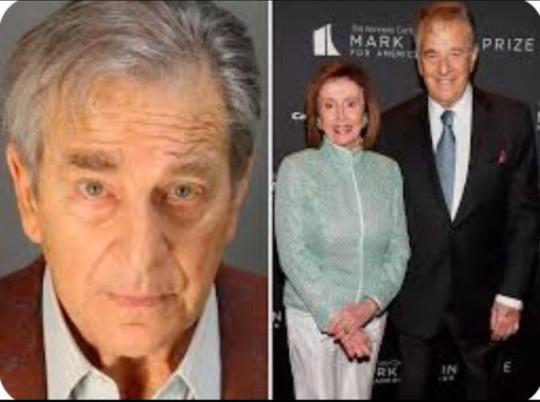
38 notes
·
View notes
Text

Jon Stewart is back.
That's right! The legendary former host of Comedy Central's "The Daily Show" will return as host starting February 12, Showtime and MTV Entertainment Studios announced Wednesday.
Stewart will host the show on Mondays and will be an executive producer, overseeing other comedians behind the desk Tuesday through Thursday.
Jon Stewart departed "The Daily Show" following a 16-year run in 2015, handing over the reins to Trevor Noah. Noah bid farewell to the show in late 2022, and the show has alternated between various guest hosts ever since, struggling to find a permanent fixture to lead the series. Stewart's return marks the first time he will be back in the chair to take on Donald Trump during a general election matchup – something that was sorely missed in 2016 and 2020.
Since leaving "The Daily Show," Stewart hosted a show on Apple TV+ called "The Problem," which ended late last year over creative differences between Stewart and Apple executives.
Regarding the news of Stewart's return, Chris McCarthy, chief executive of Showtime and MTV Entertainment Studios, said in a statement, "Stewart is the voice of our generation, and we are honored to have him return to Comedy Central’s ‘The Daily Show’ to help us all make sense of the insanity and division roiling the country as we enter the election season."
https://www.meidastouch.com/news/jon-stewart-to-return-as-host-of-the-daily-show

110 notes
·
View notes
Text


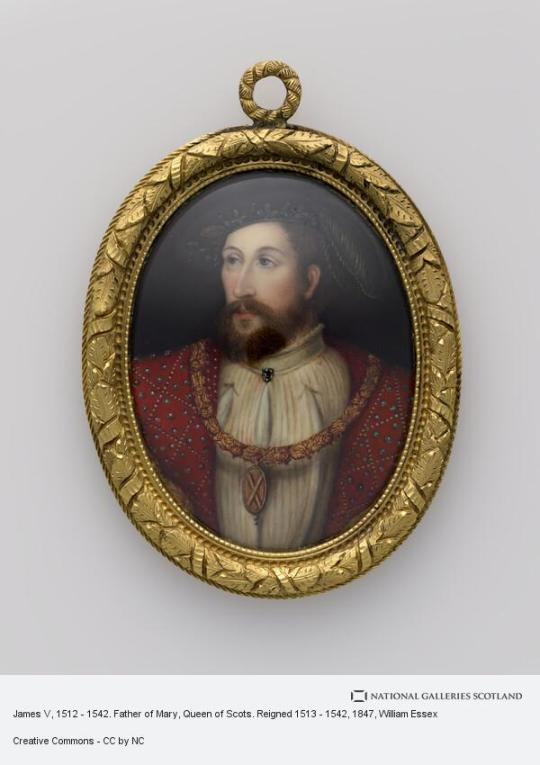
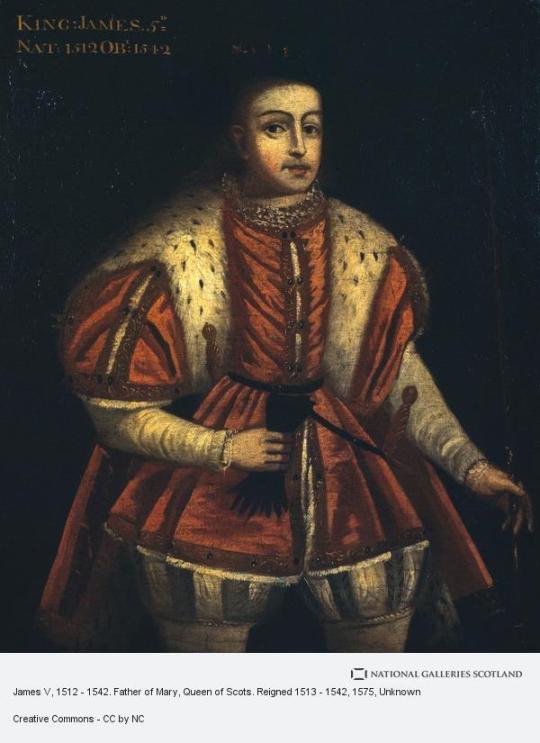
James V of Scotland was born on 10th April 1512.
James was son of King James IV and his queen Margaret Tudor, a daughter of Henry VII of England, and was the only legitimate child of James IV to survive infancy, it was through this line that Mary Queen of Scots based her claim to the throne of England, and indeed her son, who took the throne after Elizabeth died.
James was born at Linlithgow Palace and baptised on April 11th, receiving the titles Duke of Rothesay and Prince and Grand Steward of Scotland. He became king at just seventeen months old when his father was killed at the Battle of Flodden Field on 9th September 1513. James was “crowned” in the Chapel Royal at Stirling Castle on 21st September 1513.
During his childhood, like so many of the Stewart monarchs, the country was ruled by regents, first by his mother, until she remarried the following year, and then by John Stewart, 2nd Duke of Albany, who was next in line to the throne after James and his younger brother, the posthumously-born Alexander Stewart, Duke of Ross.
Other regents included Robert Maxwell, 5th Lord Maxwell, a member of the Council of Regency who was also bestowed as Regent of Arran. Queen Margaret´s tempestuous private life complicated her son´s childhood, and after she divorced her second husband, Archibald Douglas 6th Earl of Angus, the Earl kidnapped young James. For over two years he held him as a virtual prisoner, showering him with gifts and introducing him to a round of unsuitable pleasures. James loathed him and finally managed to escape in 1528 and assumed the reins of government himself.
James´ personal rule began by savagely pursuing his opponents and he hounded the Earl of Angus out of Scotland. James combined suspicion of nobles with a popular touch, travelling anonymously among Scottish people as the ´Gudeman o´Ballengeich´. John Knox described him thus: ´he was called of some, a good poor man´s king; of others he was termed a murderer of the nobility, and one that had decreed their whole destruction´.
A highly strung, intelligent man who alternated between black depression and bouts of feverish energy, James had already fathered at least nine illegitimate children by a series of mistresses by the time a marriage was arranged for him.
He married Madeleine, daughter of Francois I of France, and the young couple returned to Scotland in May 1537. The Princess was a fragile woman, and the Scottish climate did not agree with her she died in her husband’s arms on 7th July 1537, seven weeks after her arrival in Edinburgh.
In governing, James increased his income by tightening control over royal estates and from the profits of justice, customs and feudal rights. He also gave his illegitimate sons lucrative benefices, diverting substantial church wealth into his coffers. James spent a large amount of his wealth on building work at Stirling Castle, Falkland Palace, Linlithgow Palace and Holyrood and built up a collection of tapestries from those inherited from his father.
In 1538 he married another French lady, the widowed Mary of Guise, tall, well-built and already the mother of two sons. She had two more sons by James but they both died in infancy within hours of each other in 1541. The death of the Kings’ mother in 1541 removed any incentive for peace with England, and war broke out.
Initially the Scots won a victory at the Battle of Haddon Rig in August 1542. The Imperial ambassador in London, Eustace Chapuys, wrote on 2nd October that the Scottish ambassadors ruled out a conciliatory meeting between James and Henry VIII in England until the pregnant Mary of Guise delivered her child. Henry would not accept this condition and mobilised his army north.
James was with his army at Lauder on 31 October 1542. Although he hoped to invade England, his nobles were reluctant. He returned to Edinburgh on the way writing a letter in French to his wife from Falahill mentioning he had three days of illness.
Next month his army suffered a serious defeat at the Battle of Solway Moss, a loss caused by infighting within the nobles on who was in command.
He took ill shortly after this, on 6th December; by some accounts this was a nervous collapse caused by the defeat, although some historians consider that it may just have been an ordinary fever. Whatever the cause of his illness, he was on his deathbed at Falkland Palace when his only surviving legitimate child, a girl, was born.
Sir George Douglas of Pittendreich brought the news of the king´s death to Berwick. He said James died at midnight on Thursday 15 December; the king was talking but delirious and spoke no "wise words." Having said that, history reports he uttered the following; 'It cam' wi' a lass, and it will gang wi' a lass,' meaning that whilst the Stewarts came to power through marrying a princess, the Stewart line would end with his daughter as queen. Of course this wasn’t true so I wonder to myself at times why such importance seems to have been placed on his words through the centuries.
He was buried at Holyrood Abbey alongside his first wife Madeleine and his two sons. The tomb was probably destroyed during the Rough Wooing in 1544, they were again “violated” at the end of James VII reign when the people of Edinburgh rioted. Queen Victoria arranged for the vault to be repaired.
There was another story regarding the grave of James V that happened in 1683, read about that on the great web pages of Dr Mark Jardine here https://drmarkjardine.wordpress.com/.../the-tomb-of.../
25 notes
·
View notes
Note
Hey there, these are my general Green Lantern takes and I was wonder what your overall thoughts were. Unsure if they qualify as controversial but whatever, here they are:
• I think Hal Jordan (along with Barry Allen) should be killed off permanently, or alternatively Hal should switch back to being Parallax for the foreseeable future.
• While the Geoff Johns stuff from the early 2000s was decent, time has proven bringing Hal (and again, Barry) back was ultimately an unnecessary and harmful decision.
• Kyle Rayner and John Stewart should share the reins as DC’s “main” Green Lantern. When one is with the JLA, the other is the lead in the ongoing Green Lantern Corps book.
• While I do agree with the sentiment that there are too many human GL’s, Jo Mullein and Jessica Cruz are solid additions to the DCU.
• Guy Gardner is a fun character who works better in a supporting role/ensemble cast (Justice League International and Green Lantern Corps).
• Simon Baz and Keli Quintela suck. They should be retconned out of existence.
• While Simon Baz is boring and the New 52 was mostly a dismal failure, I do actually like the idea of having two younger Green Lanterns on the Justice League of America roster together. Personally, I think Jade and Kyle would be interesting.
• I’m fine with Alan Scott being gay.
All valid takes. I agree with some of your thoughts on these matters and disagree with others.
John Stewart is my favorite GL and I'm always wanting to see him as the preeminent Lantern in the DC narrative.
with a few exceptions, I'm rarely going to advocate for permanently killing off a character, but I will say that I don't have much interest in reading about Hal Jordan.
Still, who knows... I guess there is a tv show set to go into production about the Lanterns that'll feature Jordan as the grizzled vet training a younger, new recruit version of Stewart. Maybe that will prove a fun show and we change my feelings on the matter.
3 notes
·
View notes
Text

Peter Tork and Reine Stewart at the premiere of Easy Rider, August, 1969. One of the best photos of seen of Reine, photo shared from The Monkees Smoked Filled Dreams by Beatland Books.
14 notes
·
View notes
Photo


With Jack Nicholson (and, just barely visible, Reine Stewart sitting in on drums) in Salt Lake City for the filming of the Head concert sequence, May 1968. Photos by Henry Diltz.
"It was as much trouble making that movie [Head] as it was doing the TV show. For one thing, working with Rafelson is very difficult. He was not to me an artist's director. I was saved by the fact that Nicholson was on the set. I know there's one scene for sure I would never have gotten through if it hadn't been for Nicholson. And Nicholson, I think, is a master. The fact that Nicholson was involved in the project was the making of it." - Peter Tork, The Monkees Tale (1985)
“I think Jack is super. And of course, one of the things that I — I have a feeling about Jack because I see the crazy guy that he portrays on screen and I see him in life and he’s still got that, that something, you know, out of bounds is still there, and still, in his actual character, he is one of the great open-minded, open-hearted sweeties that I know. And to see a man with that, these vast, seemingly vast, differences, working and playing these crazed people on screen, and still — I mean, the reason that he’s as big a star as he is, is because he does have the capacity to be abstract about his own work. You should have heard, you should have seen what it was like working with him. He’s a great technician, which is one of the great attributes. You can’t be a crazy maniac like that and not be a good technician if you want to have a career. Because you’ll just go out of bounds without any kind of viewing.” - Peter Tork, NPR, June 1983
#Peter Tork#Tork quotes#60s Tork#80s Tork#Head (1968)#The Monkees#Monkees#davy jones#micky dolenz#Reine Stewart#Jack Nicholson#Henry Diltz#screenshots#1968#1960s#can you queue it
68 notes
·
View notes
Text
'The greatest innovation of Doctor Who has always been the concept of regeneration. When the 1st Doctor, William Hartnell, became too ill to keep playing the role, producers devised the idea of regeneration, which allowed the Doctor to renew his face and his body whenever he was killed.
This rendered the Doctor — and the show itself — essentially immortal. The Doctor could continually regenerate, and the show could continually recast its lead actor and reset itself every few years. It became the key to the show’s longevity and an essential part of the show’s creative DNA. And, 60 years later, Doctor Who just changed the rules of regeneration again.
WHAT HAPPENED AT THE END OF “THE GIGGLE”?
At the end of “The Giggle,” the Toymaker has revealed himself as the mastermind behind the insanity that has taken over humanity. He has somehow escaped his domain and entered reality, allowing him to manipulate reality to suit his twisted games. Wreaking havoc at UNIT headquarters, he turns bullets into flowers and kills UNIT soldiers by turning them into balloons. Worst yet, he takes control of UNIT’s Galvanic Beam, a giant alien laser that he starts to aim at the rest of the world, threatening their ultimate destruction. Then, to goad the 14th Doctor (David Tennant), he points the crosshairs at Kate Stewart (Jemma Redgrave), Mel Bush (Bonnie Langford), and Donna (Catherine Tate).
But the Doctor demands that he take issue strictly with him — the 1st Doctor beat the Toymaker all those years ago, so they should even the playing field with another game. The Toymaker acquiesces, suddenly shooting the Doctor through the chest with the Galvanic Beam. The Doctor begins his regeneration, the familiar yellow light glowing around his face as Mel and Donna grab his hands. But something strange happens — the light stops. The Doctor recognizes that this regeneration isn’t like past ones, and tells Mel and Donna to pull at his arms. They do, and he splits into two, into the 14th Doctor (Tennant) and the 15th Doctor (Ncuti Gatwa).
WHAT IS BI-GENERATION AND WHY IS DAVID TENNANT STILL AROUND?
What is happening? “Bi-generation,” according to the 15th Doctor. Bi-generation is a completely new concept for the show, though the 15th Doctor explains that the idea existed but “it was just a myth!” Both 14 and 15 are still the Doctor with the Doctor’s memories and abilities, but they can co-exist, even getting their own TARDISes (15, notably, gets a cool jukebox in his). Now the 14th Doctor and the 15th Doctor can go on their own adventures, though 14, shouldering all the pain and guilt from his past adventures, is urged to settle down for a little with Donna and his family.
There are still a few mysteries left to be answered with this newfangled bi-generation. Does this mean that when 14 dies, he can still regenerate? Does he still have two hearts as a Time Lord, or is he closer to human, like the last time showrunner Russell T. Davies pulled this dual-David Tennant trick in 2008’s Season 4 finale “Journey’s End”? And why did this face come back? Donna’s theory is that it was the Doctor’s way of dealing with all the pain he never was able to process, by going back to a familiar face so that he could settle down with an old friend. And with 14 apparently settling in for early retirement with the Noble-Temple family, this seems to be the case. But it’s unlikely that he’ll stay retired for long.
With this new canon-shattering change, Tennant is essentially given free rein to continue his adventures as the Doctor, separate from Gatwa’s 15. And with showrunner Russell T. Davies itching to expand the Whoniverse into a mega-franchise on par with Marvel, a Tennant-led 14th Doctor spinoff seems like something “The Giggle” is setting us up for. But hopefully, Tennant bouncing around the universe in his own TARDIS (likely with Catherine Tate in tow) doesn’t take away any shine from Gatwa’s historic upcoming era as the 15th Doctor. But whatever the case, the universe just got a whole lot bigger and full of potential. Allons-y!'
#The Giggle#David Tennant#Doctor Who#60th Anniversary#Ncuti Gatwa#Donna Noble#Catherine Tate#Journey's End#William Hartnell#The Toymaker#Neil Patrick Harris#Kate Stewart#Jemma Redgrave#Melanie Bush#Bonnie Langford#UNIT#Bi-generation#Russell T. Davies
9 notes
·
View notes
Text
Some random musings on Picard season 3
-I’m not trying to be an asshole, but in the very first scene, Beverly Crusher is operating a pump-action phaser rifle. I really don’t mean to be a pedant, but it’s a laser gun! what exactly is she pumping?
-I assumed... and according to Wikipedia, this is the case... that time had progressed in real-time for both the Trekverse and the real world. So 21 years have passed since Star Trek: Nemesis was released--21 years have passed for Picard and co since the events of Nemesis. Then we’re introduced to characters who... seem unlikely to have existed during Nemesis. Crusher has a secret love-child that is said to be about 23 years old and Geordi has a daughter who is at least old enough to be a bridge officer on the Titan. (The actors are both in their early thirties.) The notion that all the characters, immediately after Nemesis, got down to making babies is pretty silly.
-As for Jack Crusher himself... I really wish Star Trek would stop throwing in characters that are meant to be their version of Han Solo. We tried it with the Outrageous Okana, he banged Teri Hatcher--if it didn’t work then, it’s not going to work now...
And like... I’m sure this bunch of Hollywood nepo baby commies loves the idea that Star Trek is socialist and evil late-stage capitalism and shit and like... you do realize you keep introducing these grizzled captain rogue tramp freighter characters, they undermine that completely? You’re literally characterizing the socialists as lame dweebs and the capitalists as cool, sexy badasses. Which is valid, but I don’t think you intended to do that, Alex Kurtzman, I think you’re just lousy at your job.
-The circumstances of Baby Crusher’s existence are particularly silly. I’m going to get into spoiler territory, but apparently after Nemesis, Picard and Bev started dating, had unprotected sex, and conceived a child. But this Picard is a sort of workaholic Spider-Man and Beverly realized her new son would never be safe because of all Jean-Luc’s enemies. So she cut off contact with everyone from the Enterprise and started raising young Jack with Picard having no knowledge of her existence (I’m really tired of this trope, which I think no rational human being would ever actually do, but at least Picard chews Beverly out for this psychotic and incredibly uncharacteristic decision).
-This is where the TNG characters and the Picard characters feel like two separate entities that happen to be played by the same actors and share the same names. It’s not just that as they’ve aged, their ‘character development’ has led to Stewart and co. essentially playing themselves more than anything else (at one point, Picard calls someone “a dipshit from Chicago.”). It’s also that they’re treated as action heroes who are always going rogue and getting into crazy adventures; this season even introduces a mean, by-the-book Starfleet officer who acts as something of a pissed off police commission trying to rein these loose cannons in!
That’s just not my recollection of the characters. It’s the pop culture perception of Kirk, sure, and not a particularly accurate perception. But Picard was never really a cowboy. Yet they have these dumb moments like in the first season where he shows up at Riker’s house like “I’m in trouble” and Riker turns on a forcefield and busts out the phasers like the two of them are Murtaugh and Riggs. Picard had his moments of bucking the system, but they act like he was constantly riding around on a motorcycle in a leather jacket, smoking a cigarette--it’s even retroactive! They have Jean-Luc tell this anecdote about him and Jack Crusher Sr. stealing a shuttle from the Stargazer to go get laid. I really don’t think these writers have actually watched TNG--they just assume Picard is an older version of Shepherd from Mass Effect.
-Speaking of video games, the requisite superweapon this time around is portal technology. Yes, like in Portal. And the big obligatory terrorist attack is the bad guys opening a portal under a Starfleet recruitment center and then dropping it on top of a few city blocks. It’s a cool visual and all, but as a weapon, this seems to rate way behind good old-fashioned 20th-century nukes, much less all the phasers and torpedoes that are commonplace in Star Trek.
-And I know the last two seasons sucked, but it’d be nice to have some consistency. In Season 1, Picard was a contentedly retired old coot, not daredevil workaholic Spider-Man. In Season 1, Riker and Troi were happily married, albeit dealing with the grief of losing a child. Here, they’re estranged because Riker suddenly can’t take the grief we’d previously seen him work through.
And another thing: I found it risible in S1 that the technology existed to cure Riker’s son, but it was illegal, so Riker and Troi just shrugged their shoulders and said “Well, nice knowing ya, kid.” That’s the time they’d get the old gang together and steal a starship. And that’s the by-the-book, competent, dutiful officers we saw in TNG. The bunch of renegades and outlaws they’re characterized as in Picard just laid down and buried a kid? It’s so stupid!
-I know remaking The Wrath of Khan is the ol’ reliable of the Trek franchise, but this has to be the most bald-faced redo yet (with bits of Treks 3 and 4 The Force Awakens into the mix). I think Picard suffers in comparison.
-Speaking of comparisons, that “these Enterprise crew members have no respect for the law!” guy I mentioned before has a mad-on for Picard due to his time as Locutus. Obviously, that’s recycled from Sisko’s anger at Picard.
youtube
Now the DS9 example is pushing it a little far as the melodrama goes--Sisko’s being blatantly disrespectful, but still, he acknowledges the tension between them, Picard feels awkward, then they move on to official business and try to ignore the past. They actually get more heated about current events: Sisko’s reassignment and his possible departure from Starfleet.
In Picard, the character in Sisko’s shoes is far more unprofessional and emotional (we’ve given the excuse that he’s on painkillers, but you’d think that they’d have pain meds that would leave people entirely rational in the future--he certainly acts rational enough for the remainder of the episode). In front of his demoralized crew, he goes on a lengthy tirade about how much he hates Picard and all I could think by the end is that this is a guy who’s lost all respect of the people under his command. He’s more pissed off at Picard thirty years after the fact than Sisko was just a couple years after his wife died!
-They’re also doing... what I think is a dead name metaphor where the captain, because he’s a jerk, refers to Seven as Annika Hansen instead of Seven, since he hates Borg? But all it does is make it seem odd that Seven is still going by Seven long after she’s reclaimed her humanity and even joined Starfleet, given that the Borg are the ultimate evil of this universe. It’d be like if someone left a Neo-Nazi organization and decried everything they stood for, but still insisted on being referred to by their SS rank or something. What a weirdo!
-Wait, Seven joined Starfleet in Season 2, which was last year... and this year, she’s already first officer of an entire ship? Shouldn’t she still be in the Academy? And you thought it was silly when Kirk became captain of the flagship at the end of Star Trek 09!
-Raffi is awful, as usual, always either acting like a crackhead or ‘acting’ like a crackhead. She’s Space Jack Bauer now, so every scene she’s in is acted like she’s on the verge of tears, about to fly into a homicidal rage, or both. She has a scene with Special Guest Character The Audience Cares About Worf (’member Worf? I MEMBER!) where they’re both interrogating a bad guy and Worf is trying to build a rapport with the guy and Raffi is threatening to cut his dick off and shit. Raffi’s method works, because why should Star Trek be about communication and diplomacy working out when violence and aggression fails??
-My least favorite moment, though, is this bit where Riker is in command and Picard is giving him advice. Riker decides to listen to his advice, it goes to shit, and Riker turns to Picard and literally goes “You’ve just killed us all!”
You’d think a veteran starship commander would take some responsibility for his own actions instead of going “He told me to do it!” like a fucking little kid.
16 notes
·
View notes
Text
FORGOTTEN LIVES: Douglas Camfield

Before we begin! Remember to get a copy of the Forgotten Lives Omnibus at this link! You've got until the 1st of September, so make sure you don't forget to buy the book!
To make up for lost time, today we'll be covering two Doctors - firstly we'll be covering one of the only Morbius Doctors to get an official appearance in expanded media. Lance Parkin returns to this character roughly twenty years after writing "Cold Fusion" that covered the Doctor's forgotten past. As a writer who's supported the idea for years, even naming his first story after the article he wrote about the Morbius Doctors, how does he handle this incarnation?
Douglas Camfield (1931-1984) directed a lot of TV, such as Terry Nation's Blake 7, Z Cars and Public Eye. His direction credits to Doctor Who are equally impressive - The Crusade, The Daleks' Master Plan, The Web of Fear and Inferno to name a few. If there was any face behind the scenes that deserved this cameo role, Camfield was near the top of the list.
Lance Parkin, now having grabbed the reins to this incarnation, comes in with a clear vision for who his Doctor is and what his era would be. The Camfield Doctor is something of a bounty hunter, working with his companion Dattany to avenge those they couldn't save. They do not share as much time together as I may first have liked, but the chemistry between the characters easily helps you picture how the two may work together. Paul Hanley compliments this personality by making the Doctor's outfit akin to a witch hunter, someone trying to stomp out evil.
The other stories show the Doctor like a political ambassador, as if he's acting on behalf of the Time Lords. In a canon where we now have the Fugitive Doctor and her exploits alongside and against Division, the Camfield Doctor feels like how the Doctor fights against Division. There is a malicious compliance to this Doctor, where he will complete a mission so long as it is his way - if he sees wrong being done then he will find a way to change it.
To be transparent... I didn't really pull to these stories, they're good but not what I personally look for (I do commend the worldbuilding done by Gareth Madgwick in his story, it paints that world vividly). However, unlike other Doctors, I will not be examining him too much, instead I want to discuss some lore. Unfortunately for me, that means having to face my greatest enemy - the Tardis Wiki.

Now is the part where I go fully conspiracy. Where other Doctors here were built from the ground-up, this Doctor's appearance in "Cold Fusion" gives us more to work with on what this Doctor's life might've been like. It also has implications for the past Doctors we've covered so buckle in! (NOTE: Any inaccuracies about "Cold Fusion" are because I have yet to read it. Also don't take this too seriously, as Who contradicts Who all the time and Parkin can change whatever he wants.)
For example! This Doctor married a woman called Patience, having thirteen children and was even a part of the Supreme Council which was a ruling body on Gallifrey. He was subsequently charged with "consorting with aliens", something we see in Parkin's second story for this series.
However! Patience is also crucial in the plot to "The Infinity Doctors", the 40th anniversary also written by Lance Parkin. The book may or may not be in main continuity as the Infinity Doctor could be either the 1st or the 8th... or anything past and future. You want to know how that book would've originally started? It was supposed to begin with the Robert Banks Stewart Doctor with Patience. Counting Forgotten Lives continuity, this would imply that the Banks Stewart Doctor would be the one to first marry Patience.
Paul Hanley's "The Changing Face of Dr. Who" throws a fun spanner into the works. The Christopher Baker Doctor is stated to fall in love with Joan Redfern from "Human Nature" and it's TV adaptation. It feels as though the implication of the original book would make Cedric and Jilly the children that the Baker Doctor and Redfern may have had (this part is entirely theoretical). If this is the case, the Doctor would marry in his second incarnation, have human children following a third version of "Human Nature" then journey with them for a while, before eventually coming back to his wife. This also discounts that the Barry Doctor married a woman called Zodin at some point...
And maybe some things are best left Forgotten. Such as flavour text.
Patience, also, is placed into "The Machine" during "Cold Fusion" - a TARDIS created by Omega that predates the name of TARDIS, it was used to get her safely off of Gallifrey. The thing is, the Machine looks like TARDIS from the Cushing Movies.
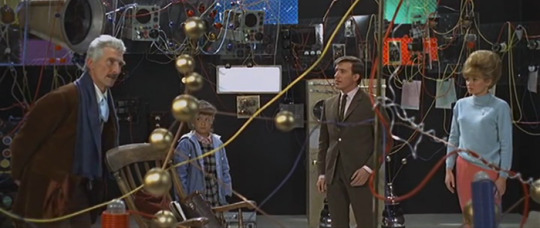
So maybe Cushing is pre-Hartnell too? And Dr. Who made TARDIS in the films, or claims to, so did he make The Machine? If Omega made it, then are Omega and Dr. Who the same? My brain feels like it's leaking.
For more insight into the creative process of every author that worked on Forgotten Lives, you can go to @forgottenlivesobverse and find interviews from everyone involved across the books. If you're looking for insight on how the outfits were designed, you can go to Paul Hanley's Patreon and find what went into designing each Doctor.
See a snapshot of how this Doctor bent the rules and tried to make amends. If this Doctor interests you, then I would even recommend trying to track down a copy of "Cold Fusion" to fill another gap.
PAST LIVES by Lance Parkin
LEVERAGE by Gareth Madgwick
RETROGENESIS (Part Five) by Philip Purser-Hallard
TRAIL OF A TIME LORD by Lance Parkin
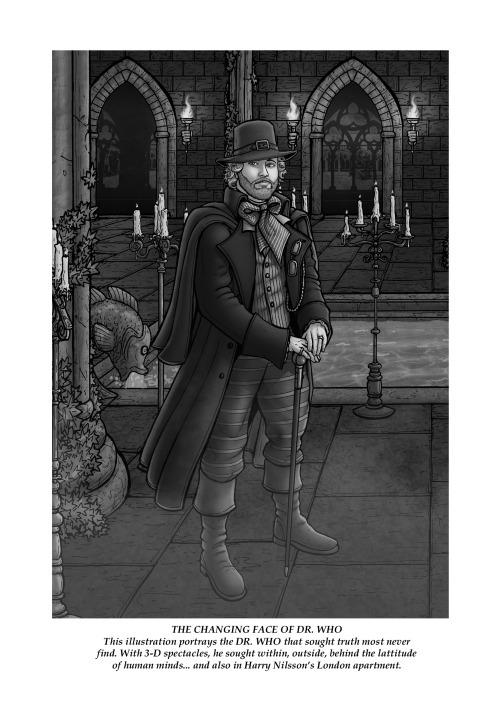
The next Doctor won't be any simpler as we cover the Graeme Harper Doctor, the journey Paul Hanley went on to simply find the original photo and grandiose sci-fi that comes with a new Doctor. That post should come later today, so don't wait too long!
#forgotten lives obverse#forgotten lives#obverse books#doctor who#the brain of morbius#douglas camfield
19 notes
·
View notes



